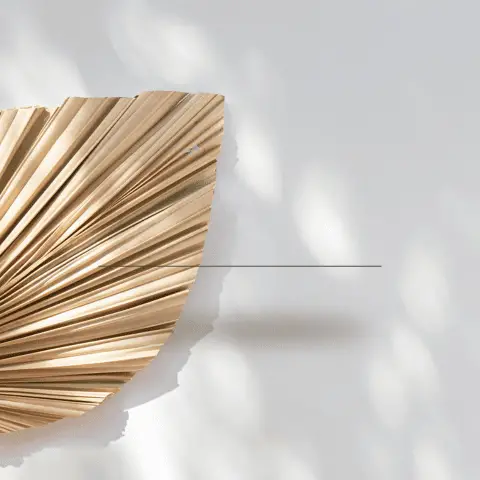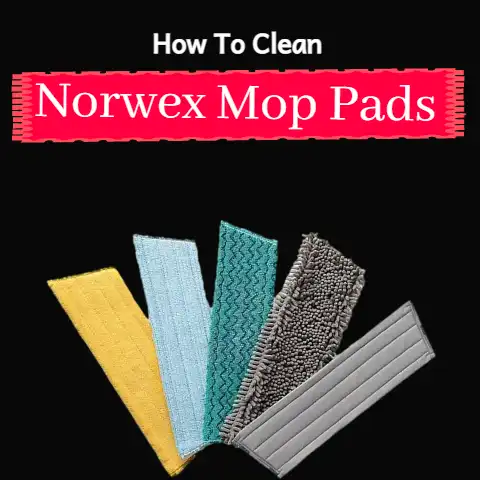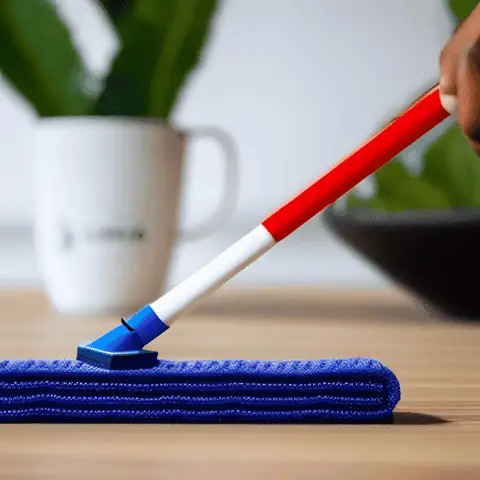Cleaning Mop Heads In The Washing Machine (Explained)
Keeping floors clean is an important part of maintaining a healthy home. Mops are essential tools for cleaning floors, but over time mop heads can accumulate dirt, grime, bacteria, and bad odors. Learning how to properly clean mop heads is key to having fresh, germ-free floors.
When mop heads are not cleaned regularly, they become less effective at cleaning and can even spread around more dirt. Bacteria and mold can also grow inside dirty mop heads. By washing mop heads in the washing machine, you can sanitize them and restore their cleaning power.
How Often to Wash Mop Heads
How frequently you should wash mop heads depends on how often you use them:
- Light use (once a week) – wash every 2-3 months
- Moderate use (2-3 times a week) – wash monthly
- Heavy use (daily) – wash every 2-3 weeks
Washing heads too frequently can wear them out faster. But not washing often enough allows buildup of grime, odor, and bacteria. Balance frequency based on your mop usage.
Also wash mop heads if they:
- Have strong unpleasant odors
- Appear visibly dirty
- Leave dirt, residue, or lint behind on floors
- Are not absorbing enough cleaning solution
Pay attention to signs your mop heads need refreshing.
Supplies Needed
Gather these supplies before washing mop heads:
- Mop heads – remove from mop if detachable
- Laundry detergent – powder, liquid, or pods
- White vinegar – helps sanitize and remove odors
- Washing machine – with agitator for best cleaning
- Laundry bag – protects washing machine from loose strings
Check mop head tags to see if machine washing is allowed. Some materials like microfiber may need air drying.
Preparing Dirty Mop Heads
Before washing, do some prep work on very dirty mops:
1. Shake Out Debris
- Go outside and shake mop to remove hair, dirt clumps, and solid debris.
- This prevents clogs in the washing machine.
- Wear a dust mask to avoid breathing in dust and allergens.
2. Spray With Vinegar Solution
- Mix white vinegar and water in a spray bottle. 1 part vinegar to 3 parts water.
- Spray vinegar solution generously on mop heads.
- Let soak 5-10 minutes to help loosen grime.
3. Scrub With a Brush
- Use a stiff scrub brush to loosen dried dirt and caked-on debris.
- Target stained or smelly areas.
- Rinse out brush so dirt is removed from mop, not redeposited.
Pre-treating will boost cleaning power for very dirty mop heads entering the wash.
Washing Mop Heads in Machine
With prep work done, now wash mops using your machine:
1. Place Mop Heads in Laundry Bag
- Put mop heads inside a zippered laundry bag and seal bag.
- Bags protect washing machines from catching on loose mop strings.
- They also contain messy dirt and grime from mops.
2. Add Laundry Detergent
- Use regular laundry detergent you would add for a normal load. Liquid, powdered, or pods all work.
- For sanitizing power, add 1⁄2 cup white vinegar to the detergent.
- Vinegar helps remove odors and disinfect.
3. Wash on Hot Water Setting
- Choose the hottest water temperature allowed for the mop heads.
- Heat helps kill bacteria and mold for better disinfecting.
- Check clothing tags if unsure of heat tolerance.
4. Add Extra Rinse Cycle
- Set machine to do an extra rinse cycle after washing mops.
- The extra rinse ensures more detergent and dirt residue is removed.
- Repeat rinses continue to flush out debris from mop fibers.
5. Air Dry Mop Heads
- Remove mop heads from the washing machine.
- Squeeze out excess water from mop fibers by hand.
- Hang mops or lay flat and allow to completely air dry before using or storing.
Avoid putting mops in the dryer – heat can damage fibers. Air drying also prevents musty smells.
Cleaning the Washing Machine
After washing dirty mops, also clean out your machine:
- Run an empty wash cycle on hot with vinegar to flush out any lingering dirt.
- Use an appliance cleaning tablet monthly to clear residue and disinfect.
- Leave washing machine door open between cycles to dry out inside and prevent mold.
- Wipe down exterior and interior surfaces with a disinfectant spray monthly to control buildup.
Regular washing machine cleaning protects the appliance and prevents transfer of dirt or odors onto other laundry loads.
Storing Clean Mop Heads
Properly storing cleaned mop heads preserves freshness:
- Hang mops to dry completely if possible before storage to prevent mold.
- Use an anti-mildew additive in the wash to inhibit mold growth.
- Store mops in a cool, dry place out of direct sunlight.
- Never tightly seal wet or damp mops in plastic containers or bags.
- Use breathable mesh bags for storage to allow airflow and drying.
- Store detachable mop heads separately from mop sticks – do not nest wet heads on sticks.
- Clean out mop buckets after use and allow to fully dry before storage to avoid lingering moisture.
With good air circulation and dry storage, cleaned mops will be fresh for next use.
Troubleshooting Mop Head Washing Issues
Sometimes mop heads don’t get fully clean or have other washing issues. Try these troubleshooting tips:
Mop Heads Still Dirty After Washing
- Pre-treat stained or heavily soiled areas with a vinegar scrub before washing
- Use hottest water temperature allowed to better dissolve and remove grime
- Add OxiClean or bleach alternative to laundry to boost cleaning power
- Increase detergent amount for extra washing power on dirty mops
- Replace very old mop heads if washing cannot restore whiteness
Moldy Smell Persists
- Wash with hot water and an anti-mildew additive like Borax
- Dry mops thoroughly before storage – never put away damp
- Disinfect and clean out mop buckets before storage
- Use white vinegar in wash cycles to sanitize and deodorize
- Replace moldy mop heads if smell cannot be eliminated
Mop Strings Tangled and Damaged
- Place mops inside zippered laundry bags before machine washing
- Use delicate cycle and avoid high spin speeds
- Air dry mops instead of using clothes dryers
- Separate mop heads from sticks before washing
- Replace torn or frayed mop heads
Leaving Lint and Residue Behind
- Use an extra rinse cycle to remove more detergent
- Wash mops separately from lint-producing items
- Check washing machine lint trap and drain hose for built-up debris
- Air dry mops fully to avoid transfer of damp lint
Be sure to prep mop heads properly before washing and allow full drying time to prevent future issues.
Alternative Cleaning Methods
While washing machines are ideal for deep cleaning mops, you can also use these methods:
Hand Washing
- Fill sink or tub with hot water and detergent
- Swirl mop heads vigorously
- Drain dirty water and repeat rinses
- Works for spot cleaning or delicate mops
Vinegar and Water Solution
- Mix 1 part white vinegar with 3 parts hot water
- Soak mop heads for 20 minutes
- Rinse thoroughly
- Helps remove odors and disinfect
Bleach Solution
- Mix 1⁄4 cup bleach into 1 gallon hot water
- Soak mops and rinse thoroughly
- Sanitizes and removes stains
- Works for white mop heads only
Spot test colored mop heads for colorfastness before soaking in cleaners.
While convenient, hand washing may not remove as much embedded dirt as machine washing.
Preventing Dirty Mop Heads
Stop dirt and grime from building up with these mopping best practices:
Rinse Mops After Each Use
- After mopping, thoroughly rinse mop heads.
- Use clean water to help suspend dirt and wring out.
- Removes residue before it dries and sets in fibers.
Frequently Replace Mop Water
- Start mopping with clean water and detergent.
- After a few rooms, water is dirty – dump it out.
- Refill mop bucket with fresh solution.
- Prevents redepositing grime.
Use Correct Type of Mop for Flooring
- String mops for tile, vinyl, concrete
- Microfiber mops for hardwood
- Disposable cloths for laminate
Let Floors Fully Dry Before Mopping Again
- Give floor time to dry after cleaning before remopping.
- Wet mopping wet floors leads to dirt pickup.
Use Entryway Mats and Rugs
- Place mats inside and outside exterior doors.
- Boot trays catch dirt from shoes.
- Trap dirt before it reaches floors.
Developing good mopping habits make cleaning mop heads much easier!
Frequently Asked Questions
What is the best way to get blood out of a mop?
To remove blood from a mop head, soak it in cold water first. Then make a paste with meat tenderizer and cold water. Scrub it into the blood stain and let sit 1 hour. Rinse and wash mop as normal in hot water with an enzyme cleaner or hydrogen peroxide. For dried stains, try an ammonia-based cleaner.
Can I put mop heads in the dryer?
It is best to air dry mop heads instead of using a clothes dryer. The heat and tumbling action can damage mop fibers, cause shrinkage, and lead to musty smells. Gently squeeze out excess moisture and hang or lay flat until fully dry before reuse.
How do hotels wash mops?
Hotels utilize industrial washing machines and dryers for cleaning mops on a large scale. They use very hot water, strong alkaline detergents, and disinfectants to thoroughly clean and sanitize high volumes of mop heads. Strict protocols prevent cross-contamination in shared laundry facilities.
What removes set-in grease stains from mops?
To remove grease and oil stains from mop heads, first try soaking in hot water with dish soap, then scrubbing with baking soda or laundry detergent before washing. For severe stains, apply a degreasing agent like Goo Gone before washing. Avoid harsh solvents that could damage fibers. Replace badly stained mop heads if stains persist through multiple washings.
How do you clean a Swiffer WetJet mop pad?
The reusable Swiffer WetJet mop pads can be machine washed to refresh. Remove pad from plastic housing, then wash on gentle cycle in cold water with mild detergent. Tumble dry low. Avoid fabric softener and bleach. Pads may only withstand 15-20 washings before needing replacement.
I hope this guide gives you the knowledge to keep your mop heads sparkling clean! Let me know if you have any other mop or floor care questions.




